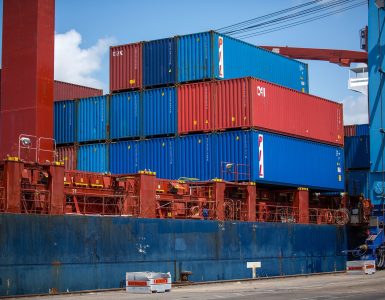A multi-front trade war has escalated tensions with global partners and is causing concern for industry as well as American workers and consumers.
First up, China.
U.S. trade with other nations is worth $4.9 trillion per year, and China is the country’s biggest trade partner, exporting almost $479 billion goods and services to the U.S. every year. Both countries rely heavily on imports from the other as well as the increasing demand for goods to support jobs and promote productivity. That is why President Trump’s “America First” policies, which apply tariffs on our biggest trading partners, have been met with concern.
Trade wars tend to escalate. On June 15, The Office of the U.S. Trade Representative released a list covering $50 billion worth of Chinese imports subject to a 25 percent tariff. The list primarily includes manufactured products, raw materials, and capital equipment. The first set of tariffs worth $34 billion went into effect on July 6.
In response, China announced it will impose retaliatory tariffs that mirror the ones imposed by the United States. The first set of tariffs began on July 6, the same day the U.S. imposed tariffs on China. The White House responded by releasing a list of $200 billion in products that could be subject to an additional 10 percent tariff. The administration threatened an additional $200 billion if the Chinese were to retaliate further.
On July 19, China demonstrated that it would not back down with the threat of future tariffs from the United States, pledging to respond through tariff and non-tariff means. The next day, the White House released a report from Peter Navarro, a top trade adviser to President Trump. The 65-page document detailed how China’s policies threatened U.S. economic and national security.
“While the United States has China’s attention, the last thing America’s manufacturing workers need is a trade war, or escalating tit-for-tat tariffs,” National Association of Manufacturers Vice President of International Affairs Linda Dempsey said. “Tariffs are raising costs to manufacture in the United States, decreasing exports, and forcing manufacturers to make the unenviable choice of incurring a substantial economic loss to foreign competitors or manufacturing overseas to remain competitive.”
Recently, President Trump instructed the USTR’s office to look into the possibility of raising the tariff rate on the $200 billion worth of Chinese imports to 25 percent. China’s retaliation was to hit $60 billion worth of U.S. exports, which would be nearly 90 percent of all U.S. goods that go to China.
Nevertheless, the war will likely go on. While the U.S. is threatening to impose further tariffs, Beijing is vowing to “fight to the end.”
Steel and Aluminum tariffs
Last month, the world saw a back-and-forth on a threatened 25 percent tariff on European automobiles by the U.S. The two parties decided to work towards finding a solution where zero tariffs are assessed.
This compromise came after a month of trade disagreements, tariff spikes, and new tariffs. In June, the U.S. imposed tariffs on aluminum and steel imports from the European Union. In response, the EU announced it would impose tariffs on $3.4 billion of imports from the U.S.
After meeting last week, European Commission President Jean-Claude Juncker and President Trump agreed to resolve U.S. tariffs on aluminum and steel as well as Europe’s retaliatory tariffs.
Ultimately, Trump decided to suspend his plans to impose tariffs on auto imports from Europe, a decision that will de-escalate trade tensions between the EU and the U.S. With trade wars heating up with other U.S. trading partners, the agreement could not be timelier. The compromise will allow the U.S. and our allies across the Atlantic a sigh of relief.
And then there’s NAFTA.
Although a year a go tensions were high, a compromise with our neighbors to the north and south is looking likelier. U.S. Trade Representative Robert Lighthizer anticipates a trade deal between Canada, the U.S., and Mexico as early as the end of August.
Trump recently hinted at an agreement between the U.S. and Mexico, but Mexico and Canada responded with a desire to work trilaterally. Although the exact day is unclear, North America can expect a revised North American Free Trade Agreement soon.
“For manufacturers and workers throughout the United States, the North American commercial market is the most important market in the world. Canada and Mexico purchase one-fifth of all U.S. manufacturing production, more than our next 10 trading partners combined. These exports support more than two million manufacturing jobs at more than 43,000 manufacturing firms,” Dempsey said.
Though the outcomes of the ongoing trade discussions are not fully known, one thing Dempsey mentioned is certain: “Updating and modernizing the 25-year-old NAFTA, if done right, will help grow higher-paying American jobs, expand manufacturing in the United States and improve America’s global competitiveness.”
















Add comment